A ‘Survivor’-style adventure in Papua New Guinea
Simply sign up to the Life & Arts myFT Digest -- delivered directly to your inbox.
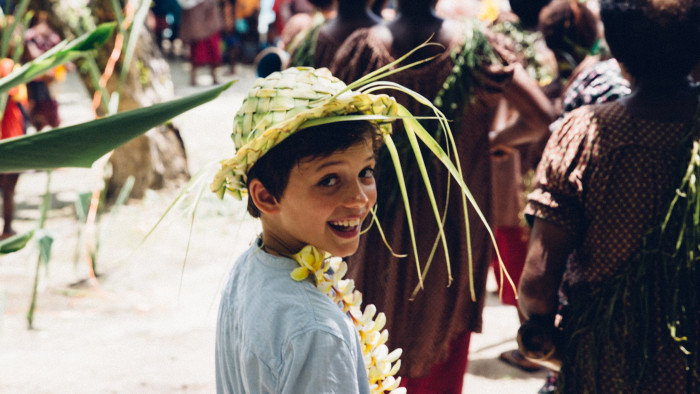
We skimmed across the Pacific in a speedboat, the wind removing the clammy heat of the tropics for the first time in days. The sea was Prussian blue, the coastline of New Britain, the largest island in Papua New Guinea’s Bismarck Archipelago, a rim of emerald forest looped with vines. On one side stood the volcanoes Tavurvur and Vulcan — looming reminders I was travelling the Pacific Ring of Fire. When they erupted in 1994, they destroyed the provincial capital, Rabaul, forcing it to move to Kokopo, a small beachside town with one of those reasonably priced hotels travellers are glad of in a remote frontier — clean rooms, fresh grilled fish, a cooling beer at a friendly bar.
I had been staying at Kokopo but was now striking out for Kabakon, an uninhabited 90-hectare island in the Duke of York archipelago a 45-minute boat ride away. Accompanied by my 10-year-old son, two other mothers and their boys, we were heading for “Kabakon Survivor”, an experience designed to offer paying guests a taste of television shows such as Survivor and The Island with Bear Grylls. “Who hasn’t let their mind wander at times, to imagine how you’d cope being stranded on a deserted tropical isle?” ran the trip notes on the tour operator’s website. “Here’s your chance to put yourself to the test, on an idyllic island in the azure seas off Papua New Guinea.”
We would live like South Sea islanders for three nights, fishing and foraging for food. The Karawara people, who live on the neighbouring island, would help us and give daily lessons in self-sufficiency. There would be some emergency rations (beans, rice, noodles and condiments), and challenges for us to earn extra, western-style food. One of the other mothers was also coming prepared, smuggling in three bottles of half-decent wine. “So long as I have a drink, I can survive anything,” she said, with no flicker of a joke.
Ray Andrews, founder of specialist tour operator Oceania Expeditions, launched the experience last year, having test-run it on his family as well as some Danish clients. When we spoke, Andrews described it as a holiday for the big guns of Silicon Valley who want to take a socially conscious vacation while doing something unique that would out-do their friends. Meanwhile, it would help the impoverished Karawara community, who have no health workers and whose population of 600 had outgrown its modest resources.
Andrews had convincing experience. Like most of Papua New Guinea, these islands lack significant tourism infrastructure, which makes remote travel hard. Homestays are as good as it gets in the Bismarck Archipelago; there are a few of them, with local communities keen to find an alternative living to subsistence fishing. Andrews, however, was used to the challenges; his father was a plantation owner on New Britain. His tour company has also built up a line in offbeat itineraries all over Papua New Guinea, from the Western Highlands to Milne Bay, since it started selling trips to the country in 2012.
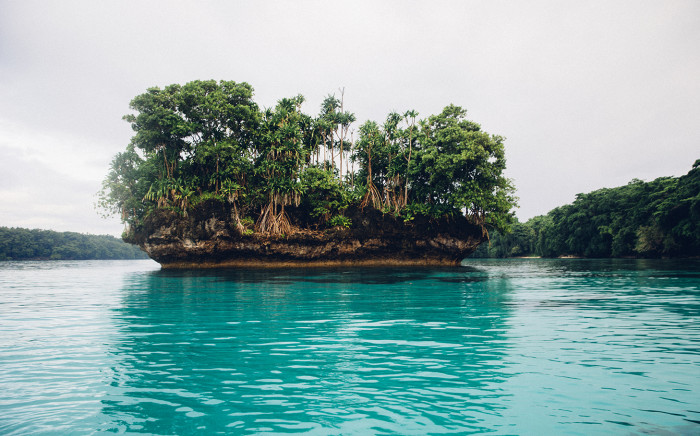
As Kabakon came into view, a pod of 15 spinner dolphins danced in front of our prow. We flew across the reef — a searing, eye-stinging turquoise — watching the dolphins show their pewter backs to the sky, arcing and diving, throwing up spray. With a wave (and a text message to Andrews), the islanders signalled at us to land in a bay of jade water. We stepped on to white sand sculpted with scalloped tide marks, much of it shaded by a long, low-lying tree. Some 300 to 400 people had gathered in the grove, their narrow outrigger canoes pulled up on to the beach. They crowded in to take pictures of us, as if we were the attraction, not them.
For the next three hours, we watched “sing-sing” performances — two groups of women, three of men. Their skin glistened with sweat and paint. Their necks were dressed in feathery leaves, heads in white fluff, some of the faces masked. Accompanied by the deep, chest-rumbling sound of drums, the dancers entered a trance — their glazed eyes burning, my son’s eyes on stalks. The way the community partook of the event felt as if we were the ones joining their party, rather than they were throwing it for us. We tucked into their feast of roasted plantains and sweet potatoes cooked in coconut milk, eaten with our fingers off banana-leaf plates. We drank from split husks, in the style of Kabakon’s earliest western colonist, August Engelhardt.
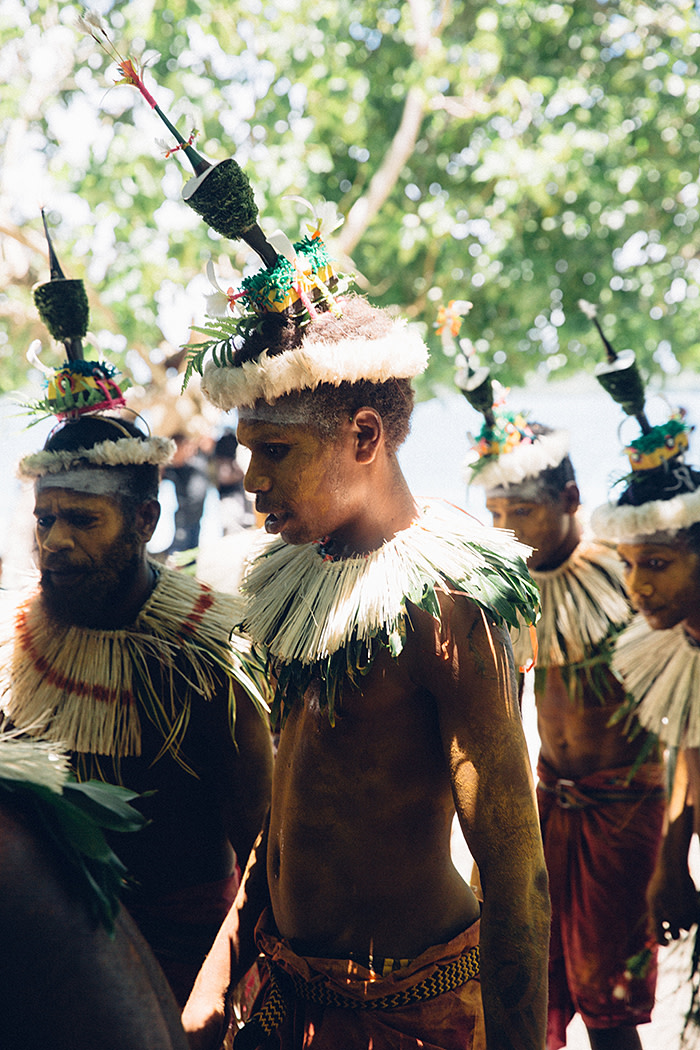
Engelhardt arrived in 1902 with the idea of starting a sun-worshipper’s colony that would survive solely on coconuts. Soon after, a few of his followers joined: eccentric, semi-naked, mostly German vegetarians, who didn’t last long. The Berlin concert pianist, Max Lützow, died here. So did Engelhardt: in photographs, he looks like a wizened skeleton, not the leader of a utopian “cocovore” cult with a healthy future.
Maybe Engelhardt should have been open to learning more from the islanders who lived next door. The sing-sing over, all but a few of the community members dispersed back to their homes across the channel, walkable at low tide. Up until the last outrigger departed, our children played with the local kids. They snorkelled on a nearby reef popping with orange clownfish nudging out of soft, lime-green corals.
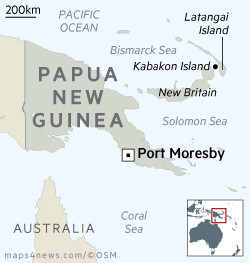
I, meanwhile, retreated to our single hut to get the measure of our reality: two rooms, one veranda, with six thin mattresses lain on wooden floorboards under mosquito nets. There was an outdoor kitchen (a fire), a few seats and a hammock. I was shown how to work the solar lights, the camping shower (two low-hanging bladders of limited water), and the outhouse, which was a conventional loo over a long-drop hole. Andrews and his colleague, a Cairns-based guide, said they would be camping nearby to provide emergency security but that, from now on, we were in the hands of the locals, that we would become part of the tribe.
When the boys were sent out to fish, each child was accompanied by an islander with an outrigger canoe. At first, I went along, too. I was uneasy about handing my 10-year-old to a stranger with a homemade spear gun. The boys loved the experience. But they weren’t very good at it. All they came back with was a single reef fish no larger than my hand.
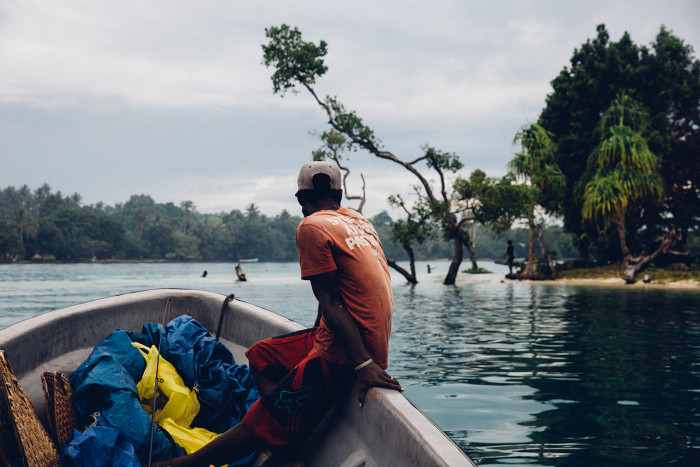
For dinner, our meal was supplemented by the talents of five local women who made some tolai aigir, a dish comprised of local greens in coconut milk, cooked with hot stones. More fish were purchased to bolster our meagre haul. We drank the smuggled wine as a pink dusk began to fall. The beat of the day’s drums swept into my dreams, and I sweated into the floor. Beetles shed droppings on to the top of my mosquito net. The next morning, I was spectacularly tired. Our breakfast comprised paw-paw, bananas and pineapple we didn’t pick, prepared by the Australians. They also made the fire and showed us where the instant coffee was kept. This wasn’t Survivor, said the kids, who were expecting it to be more hardcore than this.
In truth, they soon stopped thinking about trying to play out any reality show game-plan. They were blissfully content with the basics: the lagoon, reef and beach. The islanders showed the boys how to split the husk of a green coconut on a sharpened stick. They walked through the garden grove behind, to learn about edible roots and fruits, as well as to see a huge, wide-girthed banyan. The locals taught them to weave their own plates from leaves. They spent hours snorkelling, in a kaleidoscopic world that showed no signs of the coral bleaching that’s struck other parts of the world. And they swam with a dugong — a sea-cow with a fluked tail, like a whale’s. The boys had entered the magic-land shared with creatures European sailors once mistook for mermaids.
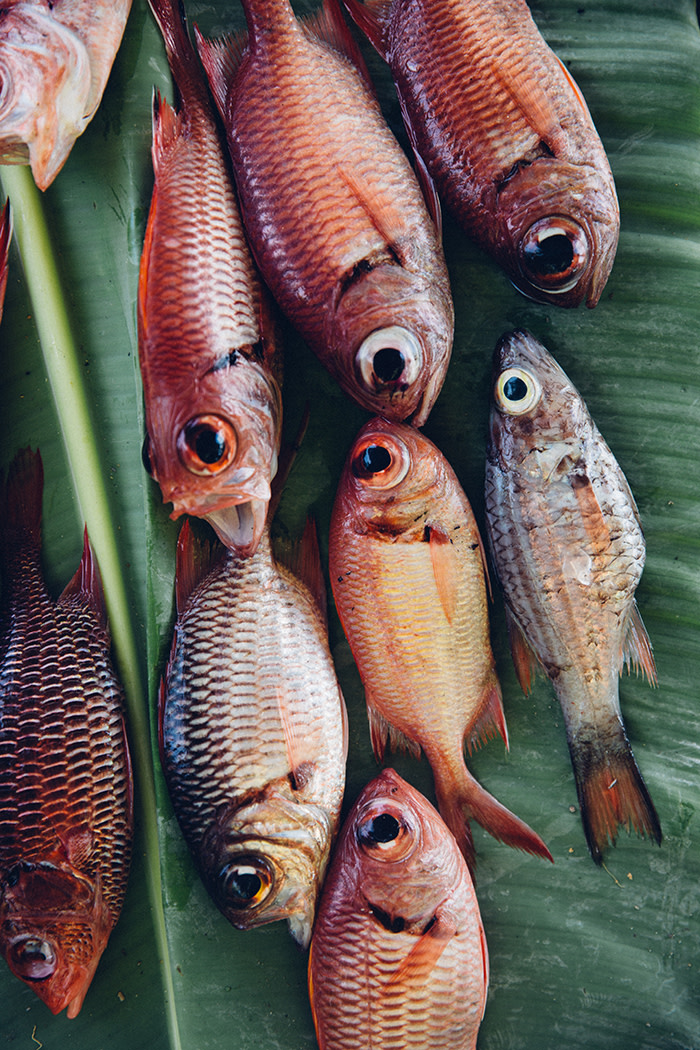
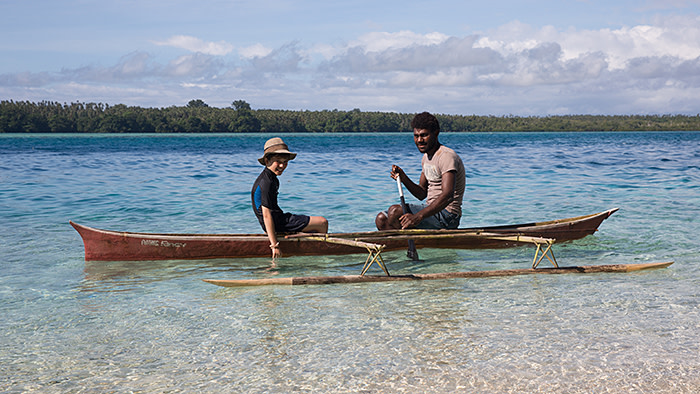
Then we went out on the boat again, but when we came back empty-handed from a brief fishing attempt, it turned out Andrews had already cooked the meal: noodles, boiled rice and tinned fish. We had failed “the challenge”, though I wasn’t quite clear at this point what the challenge was meant to be. I ate nothing, wishing we’d been able to buy another fresh catch from the people instead.
We were booked for three nights; we bailed on two, which had more to do with my two sleepless nights than any desire the kids had to leave. I was drawn to this experience by the simple reason there are few frontiers this raw: a place I’d been before on a dive boat, and wanted to experience for more than an hour here, an hour there. This happened: we were immersed. Our main guide, Eron Corey, was articulate and generous, his family welcoming us all into their home.
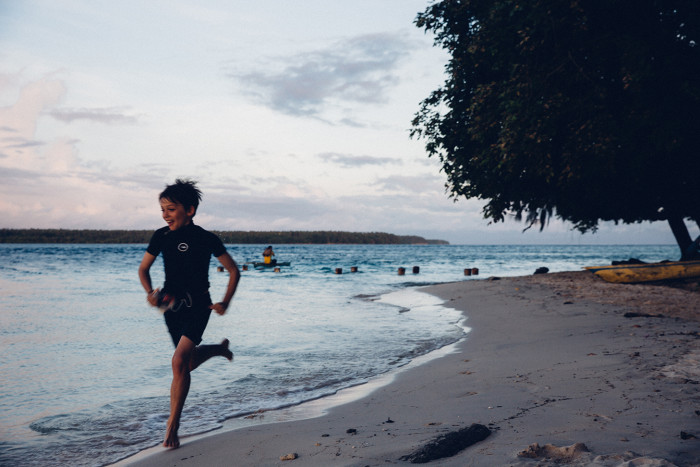
While Andrews remains convinced there is a marketable product for hardcore wannabe Survivor show enthusiasts, I think it would work better focused on the community and framed as “Kabakon Life” (in fact, Andrews does now offer bespoke itineraries to suit different client types). The Karawara have been promised that by opening up their world to outsiders, they will benefit — but how much? I couldn’t get any definitive numbers confirmed (I would argue for transparent community fees, as one might find at a progressive African lodge). But it is a beginning, in a country still trying to work the tourism industry out, where cancelled flights are frequent, and getting off the main circuits a test of patience and nerves.
All of us treasured the moments we shared with the community across the water. I spent time with the women, in T-shirts and sarongs rather than their traditional festival dress, who are fighting for every opportunity in education they can get. There were long talks with older islanders who talked about the Japanese occupation during the Pacific war; the villagers used to hide in holes, only coming out at night. We learnt the art of crab catching, tree climbing and drumming. And we visited the schoolteacher, who has few books, and three laptops, but not enough solar electricity to use them. Even during our brief visit, it became abundantly clear — to my son, not just his sleepless mother — who were the real “survivors” in this faraway place.
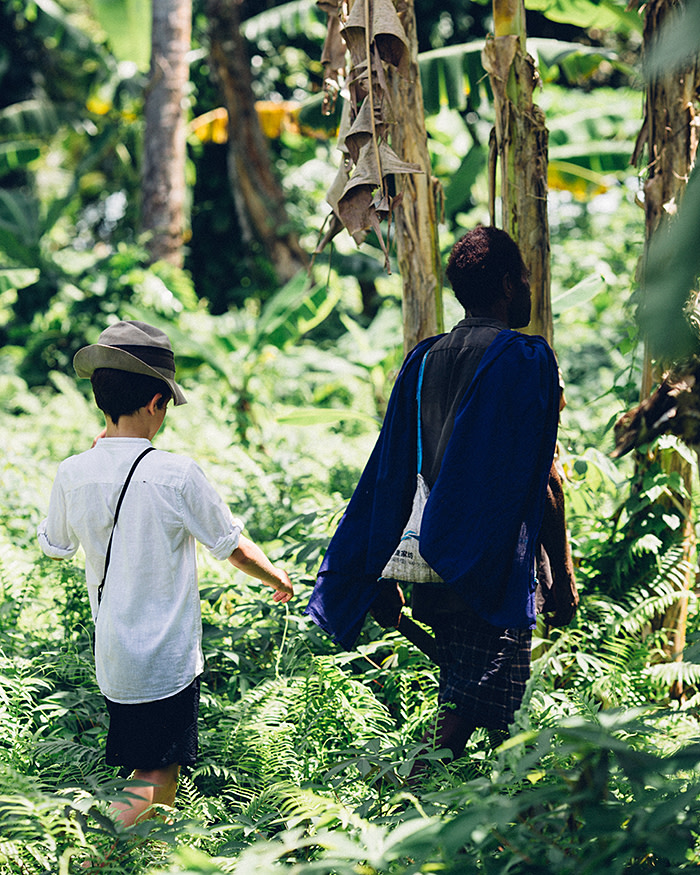
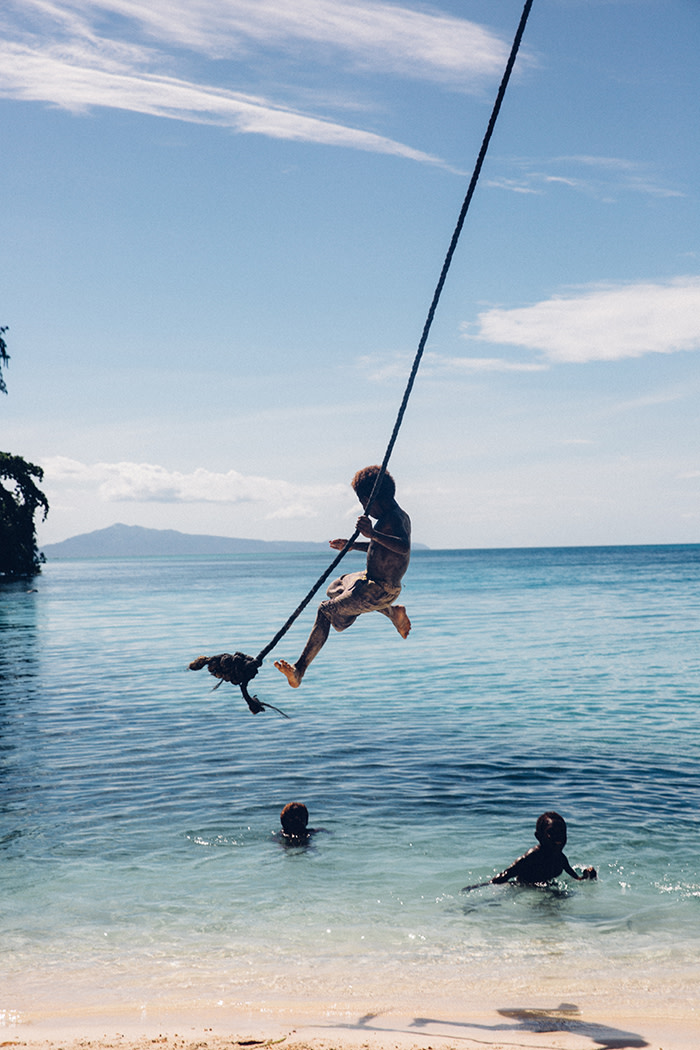
Details
Sophy Roberts and her son were guests of Papua New Guinea Tourism Promotion Authority and Oceania Expeditions.
A five-night Kabakon Survivor trip, including three nights on Kabakon, and two nights at Kokopo Beach Bungalows, costs from A$7,500 per person. Bespoke itineraries are also available
Follow @FTLifeArts on Twitter to find out about our latest stories first. Subscribe to FT Life on YouTube for the latest FT Weekend videos
Comments